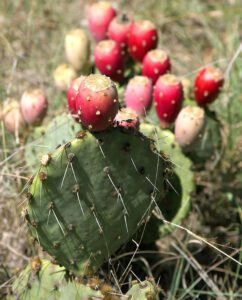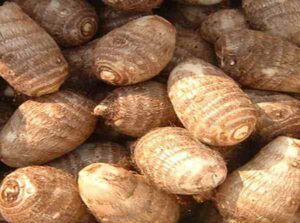Blueberry farming is a very old and popular business in some countries around the world. It is a very nutritious, healthy and popular fruit throughout the world. It’s demand and value in the market is high, so commercial blueberry production is highly profitable.
Blueberries are actually a widely distributed and widespread group of perennial flowering plants with blue or purple berries. They are classified in the section Cyanococcus within the genus Vaccinium.
The genus Vaccinium also includes cranberries, bilberries, huckleberries and Maderia blueberries. The commercial varieties of blueberries (both wild and cultivated) are all native to North America.
The blueberries are usually prostrate shrubs that can vary in size from 4 inches to 13 feet in height. The fruit is a berry 5–16 mm (3⁄16–5⁄8 in) in diameter with a flared crown at the end; they are pale greenish at first, then reddish-purple, and finally uniformly blue when ripe
In commercial production of blueberries, the species with small, pea-size berries growing on low-level bushes are known as “lowbush blueberries” (synonymous with “wild”), while the species with larger berries growing on taller, cultivated bushes are known as “highbush blueberries”. [1]
Canada is the leading producer of lowbush blueberries, while the United States produces some 40% of the world supply of highbush blueberries.
Total world production of blueberries was 823,328 tonnes in the year of 2019, led by the United States with 38% of global production and Canada with 21%.
However, commercial blueberry farming is a very old, easy and lucrative business. You can start this business commercially for making good profits.
Blueberry Nutrition
Blueberries are highly nutritious and healthy fruits. They consist 14% carbohydrates, 0.3% fat, 0.7% protein and around 84% water.
Blueberries contain only negligible amounts of micronutrients, with moderate levels of the essential dietary mineral manganese, vitamin C, vitamin K and dietary fiber.
Generally, nutrient contents of blueberries are a low percentage of the DV (table). A 100 gram serving provides a relatively low caloric value of 57 kcal with a glycemic load of 6.
Health Benefits of Blueberries
Blueberries are nutritious, sweet in taste and widely popular throughout the world. They are often labeled a superfood, they are low in calories and incredibly good for all aged people.
Blueberries are so tasty and convenient that many people consider them as their favorite fruit. Here we are trying to describe the top health benefits of consuming blueberries.
- Blueberries are low in calories but very high in nutrients. Actually, blueberries are among the most nutrient-dense berries. It is also high in fiber, vitamin C and vitamin K.
- Blueberries are very high in antioxidant, and they are called as ‘King’ of antioxidant foods. They have highest antioxidant capacity of all the popular fruits and vegetables.
- Several studies suggest that blueberries can reduce DNA damage which is a leading driver of aging and cancer.
- The antioxidants in blueberries have been shown to reduce a predominant risk factor for heart disease by preventing oxidative damage to “bad” LDL cholesterol.
- Regular consumption of blueberries can lower blood pressure level.
- Some evidence indicates that eating fruits rich in anthocyanins (such as blueberries) is associated with a reduced risk of heart attacks.
- According to some studies, blueberries can help to maintain brain function and improve memory. The antioxidants in blueberries seem to benefit your brain by aiding brain function and delaying mental decline.
- Several studies demonstrate that blueberries have anti-diabetes effects, improving insulin sensitivity and lowering blood sugar levels.
- Like cranberries, blueberries also contain substances than can prevent certain bacteria from binding to the wall of your bladder, which may help to prevent UTIs.
- Regular consumption of blueberries may reduce muscle damage after strenuous exercise. One study suggests that blueberries may aid muscle recovery after strenuous exercise, though more research is needed.
Advantages of Blueberry Farming Business
Starting commercial blueberry farming is very easy and simple. Even the beginners can also start this business easily.
You can start this business easily for making good amount of profits. Here we are trying to describe the top advantages of blueberry farming business.
- Commercial blueberry farming is a very old business idea, and many people are already doing this business.
- It’s very easy to grow blueberry, even the beginners can also start this business.
- Caring the blueberry plants is relatively easy and simple. So, you can take this opportunity for making good profits.
- Both demand and value of blueberry are high in both local and international market.
- Marketing blueberries is very easy and simple. So, you don’t have to worry much about starting operating this business.
- Many people are already doing this business for making money. You can learn from them practically if you are a beginner.
- Commercial blueberry farming is a very good and profitable business. So, it can be a very good employment source for the people, especially for the educated but unemployed people.
- Production costs in blueberry farming business is relatively less as compared to other crop farming business. But the returns are much higher.
- Blueberries are highly nutritious and there are numerous health benefits of consuming blueberries. And you can enjoy fresh blueberries if you start your own production.
How to Start Blueberry Farming?
Starting commercial blueberry farming business is relatively easy and simple. You can start this business easily and make good profits, even if you are a beginner.
Although, we recommend having practical training first from an experienced farmer in your area. Having practical knowledge will help you make good profits.

However, here we are trying to describe more information about starting and operating a successful blueberry farming business from planting, caring to harvesting and marketing.
Step 1. Site Selection
Blueberry crop prefers soils which are highly acidic, fertile, aerated, moist and well-drained. The optimal soil pH range is between 4.0 and 5.5. In case of higher pH, adding a small amount of sulfur to the soil can reduce the pH of the soil.
Step 2. Prepare the Soil
Preparing the land perfectly is very important for good production of blueberry. The land should be levelled and ploughed till it attains the fine tilth stage. And the main field should be made weed free.
Step 3. Climate Requirement For Blueberry Farming
Blueberries can be grown on a wide range of climatic conditions. However, they are best grown and best thrive in warmer climates with full sun. You can contact with your local agriculture extension office for more information.
Step 4. Best Time For Blueberry Cultivation
Actually, blueberry plants can be planted any time during the year if you can ensure sufficient irrigation.
Step 5. Choose a Variety
There numerous varieties of blueberry available throughout the world for commercial farming. Every cultivar will produce for a period of 2 to 4 harvesting weekly.
However, blueberries are grouped into 3 categories which are highbush, lowbush and hybrid half-high. You should cultivate those varieties which grow well in your area. You can consult with your local expert for better recommendation.
Step 6. Propagation
Propagation of blueberries can be done through seeds and hardwood cuttings.
Step 7. Purchase Plants
If you want to avoid producing the plants of your own, then you can purchase ready plants from any of your nearest suppliers.
Step 8. Planting
Plant spacing should be 80 cm in between rows and 3 meter aisles. Actually, blueberry planting can be done any time during the year providing there is sufficient irrigation available.
1-2 year plants grown in a 1 liter or 3.5 litter container should be planted in the main field. The preferred stem length is 15 to 25 cm and 25 to 45 cm.
Pits should be dug 10 inches deep just before 2 weeks of planting the plants. Pits should be dug out a square about one meter across to give the side-spreading roots. The soil taken out from the pits should be mixed with equal parts of leam mould, coco peat or compost.
Step 9. Caring
The blueberry plants generally require less caring and other management. Although, taking additional caring will help the plants to grow better and produce more.
Fertilizing
Using organic fertilizers in blueberry farming business has many potential benefits. Well-rotten farm yard manure like cow dung should be supplemented at the time of land/soil preparation.
As the blueberry plants love acidic soils, so look for a high acid blueberry bush fertilizers that contain ammonium sulfate, ammonium nitrate, or sulfur-coated urea.
Watering
Water or irrigate the plants immediately after transplanting in the field. The blueberry plants should be irrigated once a week for better growth.
Generally, rain water is much better than the tap water as it is more alkaline in nature. The plants may require frequent irrigation based on soil moisture holding capacity, in long dry spell weather conditions.
Mulching
Mulching helps to retain moisture into the soil. And at the same time it also helps to control weeds. You can use organic materials for using as mulch.
Controlling Weeds
Controlling weeds is very important in commercial blueberry farming business. Because, weeds consume nutrients from the soil and your blueberry plants will suffer.
So, frequent weeding and hoeing are required to keep the field weed free. Mulching will also help to control weeds from the field.
Pruning
The blueberry plants are a bush type and grow stems from it’s crown. Generally, the number of productive stems should be 9 to 12.
Pruning should be carried out every year by removing canes that are 5 to 6 years old. You should not allow the bush to produce fruits for the first couple of years.
Pinch black blossoms, this will help to stimulate the growth of the plant. Pruning should be carried out in late winter, preferably just before growth begins. But during the initial 4 years, there is no need of pruning.
Step 10. Control Pests and Diseases
Generally, the blueberry plants are resistant to most of the pests and diseases. The main problem is, these berries are a favorable food for birds. So avoid birds in the orchard by adding nets around the plants.
Step 11. Harvesting and yield
Generally, blueberry plants will start to produce fruits from second or third season of growth. The plants produce berries once a year. Harvested fruits can be marketed as fresh as well as canned.
In most cases, harvesting will start in the month of August to September. Don’t pick the blueberries as soon as they turn blue and wait for a couple of days. They should fall off right into your hand when they become ready for harvesting.
Yield
It’s very tough to tell the exact amount, because it depends on numerous factors. The fruit yield depends on many factors like variety, soil type, irrigation and weather conditions.
Generally, in good management you can expect 1 kg of fruits per each plant in the first harvest. But it the subsequent years, blueberry plants will double in yield until the 6th to 7th year of maturity.
The maximum yield can be expected from a plant is 10 kg and an average yield is 5 to 6 kg per plant. And in most cases, a blueberry plant produce fruits up to 20 to 25 years.
Step 12. Marketing
This is the most important part of successful and profitable blueberry farming business. Your venture will not be profitable if you can’t market your products properly. So, determine your marketing strategies before starting this business.
These are the steps and ways of successful blueberry farming business. Hope this guide has helped you. Good luck and may God bless you!






